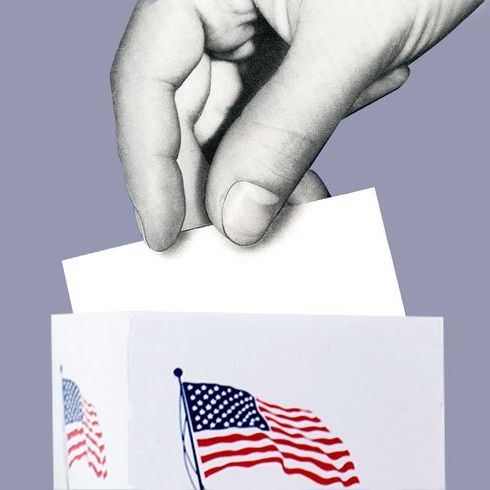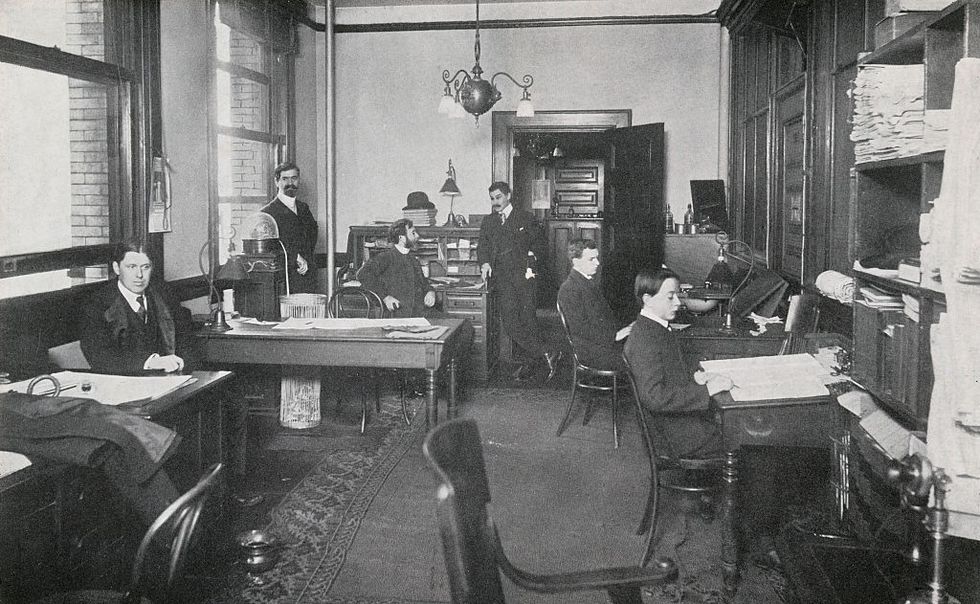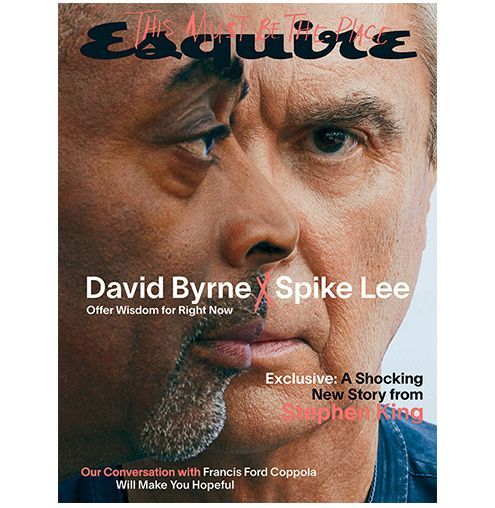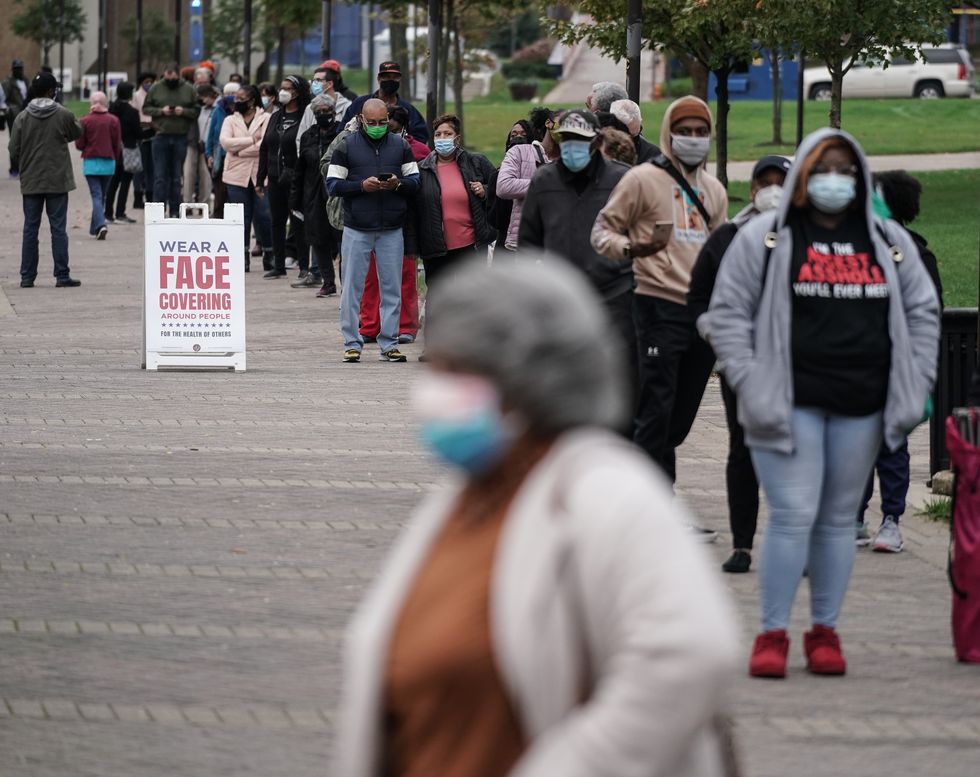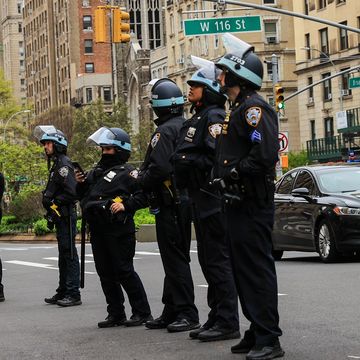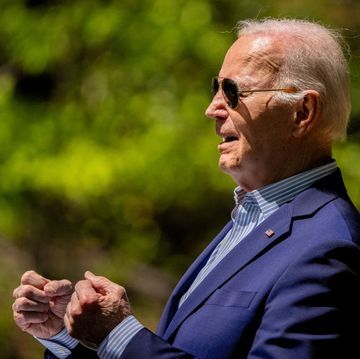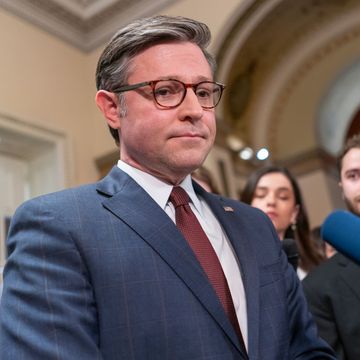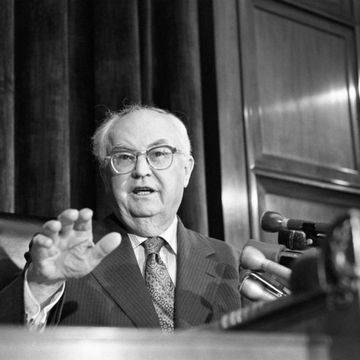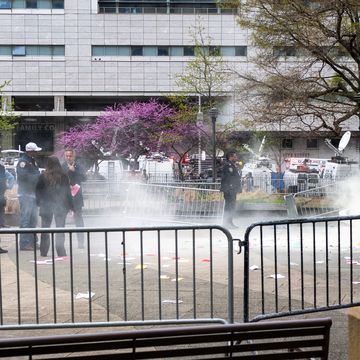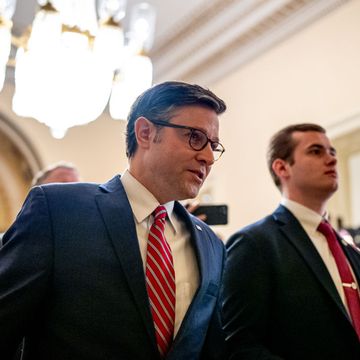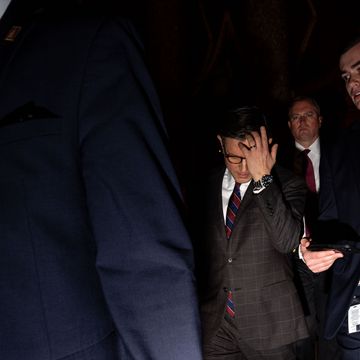Julie Pace has spent the last several weeks talking to journalists about their nightmares. She is the Washington bureau chief for the Associated Press, and the reporters in her care bring their Election Day fears to Pace. Woke up in the middle of the night in a cold sweat about mail-in ballots? Call Julie. Worried that President Trump will declare himself the winner before the votes are counted? Get Julie on the phone.
“I have spent a lot of time trying to game out and brainstorm with people all of the nightmare scenarios that everybody has,” she told me earlier this month. “I’ve become known in the bureau as the person to confess your nightmares to.”
The Associated Press has called U.S. elections since 1848, when it used a new technology, the telegraph, to declare Zachary Taylor the next president of the United States. In our lifetime, Election Day has pretty much gone like this: visit your local polling place, vote, flip on the TV around prime time, and watch the returns come in. By the time you go to bed, the media has declared a winner. While cable networks have their own teams of experts who compile data and project winners, they rely on the AP’s reporting and data to cross-reference their work. And the AP supplies results to its subscribers, including The New York Times, Google, and myriad local newspapers. The general consensus is if the AP declares a winner, it must be true.
The AP was the first to name a winner in 2016, issuing this bulletin at 2:29 a.m. ET on Wednesday, November 9: “Donald Trump elected president of the United States.” When Stephen Ohlemacher, the agency’s election-decision editor, emerged from the room where he and his team were working to tell then-Washington bureau chief (and now executive editor) Sally Buzbee that Trump had won, he asked who else had called it—not projected it, but said definitively that Trump would be the forty-fifth president of the United States. The answer: only the AP. About twenty minutes later, Trump came out and said he’d just gotten a phone call from Hillary Clinton, who had conceded.
Through pandemics, world wars, and social unrest, the AP has told America the winner of its presidential elections. But no one expects Election Day 2020 to look anything like the ones we remember—which explains all the nightmares in the AP’s Washington bureau. A deadly pandemic has sparked an influx of mail-in ballots, and election laws concerned with when and how to count those ballots are changing even now. Meanwhile, both Trump and Vice President Mike Pence have refused to say they will accept the results of the election, calling into question the very bedrock of American democracy. The president has also encouraged his followers to monitor polling places, all but telling them to intimidate voters.
“There is a danger that the media, or at least parts of the media, may call the election quickly, trying to be the first with a call for certain battleground states or for the overall election. And that could create a dynamic that whoever gets declared a winner, [Trump’s] supporters will think that’s the true result,” says Rogers Smith, a professor of political science at the University of Pennsylvania. “And then you have the large number of mail-in ballots we have this time coming in later and producing a different result that will heighten the tensions over fraud and claims of fraud and make reaching widely accepted resolution and the election even more difficult.
“We think it’s a greater danger than in any presidential election since the South refused to accept the results of the election in 1860.”
So, how is the Associated Press planning to call a winner in this historic election, to ensure it gets this one right despite the unprecedented hurdles, because getting it wrong could spill the country into chaos? That’s what I sought to find out.
In 1846, five daily newspapers in New York City pooled their resources to cover the Mexican-American War. The result of this cooperative effort eventually became known as the Associated Press, a not-for-profit agency that provides news coverage to its member organizations. At first its members were newspapers, then radio stations, TV networks, websites, and tech platforms. Today there are 248 AP bureaus in ninety-nine countries, comprising editors, reporters, photographers, and support staff. In 2019, the AP produced two thousand stories and three thousand photos every day. (The current chairman of the AP board of directors, Steven R. Swartz, is president and CEO of Esquire's parent company, Hearst.)
The D.C. offices of the Associated Press have sat mostly empty since March 13, when the staff started working from home because of the pandemic. On November 3, Pace, Ohlemacher, and members of their teams will return, masked, sitting six feet apart. There will be no buffet meals.
The AP has covered the primaries while working remotely throughout the pandemic, but, according to Pace, it’s important that their work around the presidential election happen in person. “For any election, but for this election in particular, we want to make sure there’s no breakdown of communication,” she says.
The AP’s election-coverage operation is massive and complex, but here’s the simplest way to describe how it calls elections. An editorial team consisting of reporters, editors, and photographers produces stories about Election Day. A team of sixty analysts interprets data coming in from each state to declare winners in about seven thousand elections, from the White House to local races. And “a bridge” of editors, according to Pace, connects these two sides; she’s part of that team.
In addition to the people, there’s a machine component called VoteCast. This is basically the AP’s new version of exit polling—a way to ask 140,000 people, starting October 28 via phone and online surveys, if they voted, for whom they cast their ballot, and why. Until the invention of VoteCast in 2018, AP reporters asked people leaving their polling place for whom they voted. This year marks the first time VoteCast is being deployed in a presidential race. VoteCast is more effective than traditional exit polling for capturing early, mail-in, and absentee voters, making it a better tool for 2020, when more than half of the electorate is expected to vote before Election Day.
On November 3, the staff working with the AP’s VoteCast data will confine themselves to a so-called quarantine room, prohibited from sharing that information with anyone before 5:00 p.m. EST. (After the 1980 presidential election, media outlets struck a handshake agreement that they wouldn’t declare the winner in a state before its polls closed.) Once the VoteCast staff are free to roam the newsroom, the AP editorial team can start reporting on trends in that data, like the issues that were most important to voters. They won’t report on what VoteCast may be saying about Trump or Biden leading in any state.
As the day turns to night, things will start moving quickly. Polls will begin to close on the East Coast, and for some states that are very blue or very red, the AP will likely declare Trump or Biden the winner of that state—and start tallying up the expected Electoral College votes.
“We have to have such an incredibly high degree of certainty that we are saying, ‘This person has won,’” Ohlemacher says. “We are not projecting that they have won; we’re not predicting that they have won. We don’t do likely winners. We are making a declaration.”
So how does the AP make this determination? “In the simplest terms, we declare a winner once we come to the conclusion that the trailing candidate will not catch the leader,” Ohlemacher says. “To do that, we have to take every single piece of information that we have in making that declaration, and that starts well before Election Day.”
Some states establish a threshold that will trigger an automatic recanvas or recount. (In Michigan, for instance, a recount is triggered if a candidate wins by fewer than two thousand votes.) If the margin falls in that window, the AP won’t call the race. If the race is close but doesn’t meet the recount threshold for that state, the agency looks at other factors, like the number of votes still outstanding from mail-in ballots and whether it’s a swing area. For each race, Ohlemacher takes his team’s result to a team of top editors, including Pace.
“In some ways, the race calling is very much a science, but it’s also a little bit of an art, when you’re talking about a situation like that,” Pace says, referring to a tight race that isn’t close enough to trigger an automatic recount.
When it comes to declaring the winner for president, AP executive editor Sally Buzbee will make the final call before the official bulletin is sent out.
The AP’s track record is nearly perfect. In 2000, the agency, along with the TV networks, called Florida—though not the White House—for Democratic candidate Al Gore. The AP pulled back the call once it became clear how close the race was. After 2:00 a.m. on November 8, 2000, all five TV networks had projected that George W. Bush would win Florida and thus the presidency. The AP, however, never officially declared a winner, saying it was too close to call.
In general, the media dedicates incredible amounts of money and staff to preparation for election night. But the circumstances of this particular presidential election have led to more scrutiny. Recently, current and former presidents of the American Political Science Association published a letter in The Guardian questioning the fitness of American media outlets to fairly declare a winner.
“All votes count, and we should count all votes—including mail ballots that may take weeks to tally. But we should also focus on the calling of elections by the media. Can we really rely on them to call elections fairly?” the letter reads. “Are they still unbiased observers? Or have their incentives become less to protect democracy and more to attract audiences?”
The letter then goes on to suggest a bipartisan panel to oversee the returns and, short of that, proposes that “all media should adopt the strict standard that no state winner should be declared until the number of votes remaining to be counted has been certified to be less than the margin between the two major-party candidates.”
The AP could play an important role in this equation, two of the letter writers told me.
“AP has deservedly acquired a reputation as one of our oldest and most distinguished media organizations for providing reliable news,” Smith said. “And so if the AP leaders recognize their responsibility in this regard, that will probably have a beneficial influence on the media sector in general.”
But to the point the letter makes about the media’s race to be first, Ohlemacher stresses that the AP’s goal is accuracy at all costs. “We’re journalists. Everyone wants to be first. But being first is a far distant second priority to us than being accurate,” he says. “We understand what’s going on in this country and we understand that folks may not have as much faith in our institutions as they once had. We are committed to making sure we provide accurate information to them on Election Night. If that means we have to wait, and if that means we’re not first, that’s perfectly okay.”
As of October 26, more than sixty million people have already voted, according to CNN and Edison Research’s polling of election officials. Ohlemacher and his team are looking at that data. The thing to keep in mind on election night, however, is that the rules differ by state. In Florida, for example, they can begin processing votes twenty-two days before the election. But in Pennsylvania, Wisconsin, and Michigan, they must wait until election day to start.
Counting the votes on Election Day shouldn’t pose a problem, according to Jennifer Nicoll Victor, a political science professor at George Mason University. “The data I'm seeing so far suggests lots of people who are doing mail-in voting are going to get their ballots in early enough,” she says.
A bigger issue than the flood of mail-in ballots are the legal implications of this election. Both candidates and their parties are armed with lawyers in preparation, and this year could be the most litigated election yet. “What we don't want to do is have our race call be objected in a legal challenge,” Pace says. “So, if it looks like voting is essentially halted or counting is halted, we're not going to call because we don't want to be able to be wielded in a court battle over voting.”
What’s different this year for the AP—beyond the VoteCast technology—is what will happen on the editorial side, the ways in which the writers and reporters will explain the races.
“The editorial operation will be spending a lot more time not just writing stories that say this candidate won this race, but trying to explain how they did and why we’re making the calls,” Pace says. “I don’t think we live in a moment anymore where we can assume that when the AP says this candidate has won Florida, that by virtue of us being the AP, people will believe us.”
And what about Trump? Does his volatility and the fears of the chaos he could initiate on Election Day change anything about how the AP will do its job? I walked through one nightmare scenario with Pace: It’s getting late in the evening, and the race remains close in Pennsylvania. The AP hasn’t called it yet, but Trump fires off a tweet to his eighty-seven million followers: “I JUST FOUND OUT I WON PENNSYLVANIA!!!” His followers take it as fact.
Pace’s response is simple.
The editorial team at the AP would make the decision about whether or not to cover his declaration, but if it did, the story would say, “The president has said he’s called Pennsylvania” while also making clear in the same sentence that “the AP has not called it, and here’s why we haven’t called it.”
“We’re not going to change a race call, or change our strategy around calling races, because of what the president says. That train, with the race call, is just going to kind of barrel on, regardless of what he’s saying,” she says. “At the same time, we are going to use the expertise and the data from the race calling to bracket what the president is saying. We can’t ignore it.”
When I spoke to Ohlemacher, who is, in effect, the driver of that train, his own decades of experience and the institution’s centuries of experience are clear. He has an encyclopedic knowledge of elections, not just presidential—he rattles off examples from state primaries of years past. He seems utterly unfazed by the chaos surrounding this election cycle.
“We at the AP have a long history of declaring winners in states that take a long time to count votes: California, Washington, Oregon, Utah, Colorado, Arizona. The difference this year is that we are going to have to deal with that issue in more states. So it’s not really about being more cautious. It’s about applying that same level of caution that we use in those states to other states.”
On November 3, he’ll bring a sleeping bag and a change of clothes to the D.C. bureau office, as he does on every election night. When we spoke, on a Friday afternoon twenty-five days before the election, Ohlemacher and his team were steeling themselves for the days, nights, and weekends they’ll spend preparing. There was a mix of excitement and nervousness. He knows from experience that the closer Election Day gets, the more confident he and his team feel.
But on November 1, the Sunday before, they will rest.
“No one’s allowed to touch that Sunday,” he says. “That is the day when we set time away. I tell my team: ‘I don’t want you to look at it. I don’t want you to think about it. I want you to take that Sunday and just chill and do whatever it is that makes you happy in this world, and just relax.’
“We’ll come back on Monday and worry about it then.”

Kate Storey is the author of White House by the Sea: A Century of the Kennedys at Hyannis Port and the senior features editor at Rolling Stone. She was previously a staff writer at Esquire, where she covered culture and politics, and has written long-form profiles and narrative features for Vanity Fair, Marie Claire, Town & Country, and other publications.
